Non-destructively author, layout and look-dev scenes with layered USD assets, compositions & overrides. Fast viewport for previews & playback. Inter-op between Maya, Houdini/Solaris, other DCC apps or game engines. Unified procedural rendering workflow with low TTFP in 3DelightNSI, Arnold, Redshift, RenderMan® and VRay.
For an eval version of Multiverse e-mail usMaya plug-in
| Maya | 2018, 2019, 2020, 2022, 2023, 2024 |
| O/S | Win, Linux, macOS |
| Python | 2.7, 3.7, 3.9, 3.10 |
| USD |
v23.02 |
| STEP, STL, OBJ, IFC, IGES |
As USD data |
| Alembic |
v1.7.10 |
Supported Renderers
| 3DelightNSI | 2.0+, Cloud |
| Arnold | 5.2+, 6.0+, 7.0+ |
| Redshift | 3.0+, 3.5+ |
| Renderman | 23.2+ 24.0+ 25.0+ |
| VRay | 4.3+, 5.2+, 6.0+ |
Supported Pipeline Tools
| OpenPype | 3.9.2+ |
| Prism | 2.0 (beta) |
USD DCC Interoperability
| Houdini (via Solaris) | 18+ |
| Vicon Shogun | 1.3+ |
| Blender | 2.82+ |
5.0+ |
|
| Katana (via plug-in) | 3.5+ |
| Unreal (via plug-in) | 4.24+ |
| Unity (via plug-in) | 2019.3+ |
| Nuke | 12.2+ |
| 3dsmax | 2022+ |
Powered by a new end-to-end multi-threaded architecture, from scene construction to final rendering. Designed to deliver an easy and logical workflow to artists under tight work deadlines and budgets. Featuring UI and UX that are clear, well thought and pleasant. Ready for deployment in production environments of any scale, with a new Python API that is straightforward to use and integrate, abstracting the vastness of the USD APIs.
Multiverse | USD v8.2
v23.02.Since 2015, Multiverse is being used worldwide by an increasing number of customers working on high-profile content such as Hollywood feature film productions, Original TV Series by Netflix, Amazon, HBO, Apple, elaborate TV commercials and much more:
Some of our clients' outstanding work created using Multiverse over the past years:
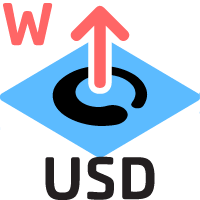
Multiverse allows to quickly and easily write static or animated Maya data as USD "assets" to be later read in Maya by Multiverse or for inter-op with Houdini / Solaris and other DCC Apps that support native USD. Write a large variety of Maya primitives such as poly mesh, subdivisions with support for subdivision creases, blend shapes, texture references, transforms, curves, particles, skeletons, cameras, lights, hierarchies, properties, proxies & guides (via the Multiverse Set node), instances and point instancing. It is also possible to write custom attribute, both Maya-typed and USD-types, with full support for animation.
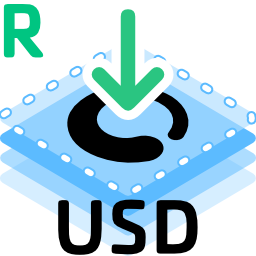
Static or animated USD data is instantly read into Maya via the highly optimized "Multiverse Compounds" nodes. Alembic, STEP, OBJ, STL, IFC, IGES files are read through the USD API. Polygon meshes, subdivision surfaces, points/particles, curves (fur/hair/paintfx/nurbs), skeletons are all supported. Additionally file-per-frame sequences of USD (and ABC) are supported via USD Clips. Data is always interpolated between frames, with re-timing and looping controls.

Multiverse allows for importing USD data at read time or post-read time in the MEOW interface. Import of individual prims, portions of hierarchy or full hierarchy is possible for polygon meshes, transforms, instances and cameras. Imported data is fed from a Multiverse compound preserving animation via a "live connection" and changes to the resulting Maya objects can be written back to USD as sparse overrides. It is also possible to import USD data as Maya data without any connection from the Multiverse Asset Read UI and Python API. Additionally, sparse overrides written from an imported objects can be automatically added as a new layer into the original Compound node allowing for a full data "round trip" from Maya (or other DCC) to USD, back to Maya, and back again to USD.

With Multiverse you can organize static or animated USD data into new hierarchies made of Multiverse Compound nodes and Maya transform nodes (groups). These can be written out as a single USD file, called a USD "composition". Compositions can be further read, re-organized, nested recursively over and over consolidating many USD files from a single entry point. This guarantees a completely non-destructive pipeline: users can update individual USD files in parallel while they are used: simply refresh a Multiverse Compound to update.
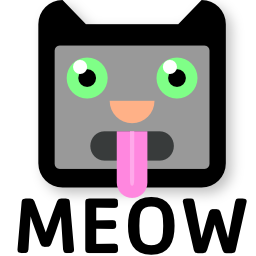
Explore & override the content of Multiverse Compound assets and compositions via the MEOW UI, a high performance, hierarchical tree graph matching the structure of any USD file, such as the ones written by Multiverse Write Asset/Composition, Solaris USD_ROP. MEOW can instantly display very complex hierarchies of items, and allow to override at any point material assignment, transformations, attributes, variants and visibility. Overrides are inherited to children items (if not further overridden).

Static or animated overrides set in MEOW can be either saved in the current Maya scene, or written out by Multiverse as USD "override". Overrides can be then "layered" on their respective Compound, with the option of automatically sync a Compound by creating a new layer for the overrides that were written. Layers can also be consolidated directly from the Compound UI. Finally USD attributes and USD variants can be authored also on Compounds via MEOW.

Just like you can stack 2D pixel layers in Photoshop, you can layer 3D USD data in Multiverse Compounds nodes. When layering you will override sparse changes as primitives and properties in a top-down fashion. Layering grants an efficient pipeline where departments can work on separate data and re-composed at please. Typical layering examples are: add/update UVs to a geometry, override a T-pose model topology with animated points, add material assignments (layering does not break pre-existing material assignments, and you can layer further material assignments), add/update geometry to an existing hierarchy, add/update normals etc. Overrides can also be synced on writing, and Compounds can be consolidated directly from their UI.
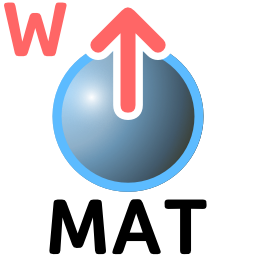
Ability to use pre-made "USD material packages" containing textures, as USDZ files. For example you can now use any material from AmbientCG.com whose extension has been changed from .zip to .usdz. These materials are serialized using usdPreviewSurface networks. Additional ability to create your own, new Material Packages through a shelf button UI that is easy to use. Ability to layer Material Packages in a Multiverse Compound: once layered, USD materials can be assigned to prim items in MEOW. Rendering of USDZ Material Packages is possible in 3DelightNSI. Finally, USDZ Material Packages can be written out from HyperShade.

With Multiverse you have at your disposal a novel, comprehensive and production-ready, support for USD Variants in Maya. This allows users to easily and efficiently author, edit, write, select, override and render both hierarchy-based & attribute-based variations (with support for animated attributes), whether originating from Maya data or from USD data encapsulated in Multiverse Compounds. Read more about it on the relative Variants Documentation.

Multiverse offers complete write & read abilities of USD point instancing as well as regular instancing. Maya "duplicate as instance" are written as instances, while Maya instancer, particle instancer and MASH instancer are written as the efficient USD point instances. Additionally any type of Houdini instancing can be read: USD packed instancing, packed instancing and duplicates.
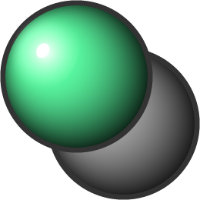
Multiverse offers a complete, intuitive and extremely fast look-development workflow. Viewport display color and rendering material assignment can be written to USD independently, and read back later. Layering combined with namespace selection allows for fast switch between different render engines and/or different looks. MEOW offers ultimate, fine-grained, material assignment and namespace attribute overrides on selective hierarchy items, with inheritance support. Everything is resolved procedurally at render-time.

Everything is streamed to the viewport delivering high FPS for drawing, manipulation and playback. Multiverse uses a combination of Hydra and VP2 for its OpenGL/DirectX viewport. The user can also strategically "hot-swap" various viewport drawing modes to scale scene complexity beyond physical memory limits: this keeps Maya scenes light-weight, faster to open & render.

Exclusively on macOS, Multiverse leverages on Metal, the low-level, low-overhead, streamlined hardware-accelerated 3D graphic API by Apple. This enables Multiverse's Hydra-VP2 viewport to deliver even higher performance, FPS for drawing, interactive manipulation and playback on macOS devices.

Inter-operate meshes, subdivisions, curves, points, cameras and attributes between Maya and Houdini / Solaris bi-directionally. Modeling & animation data can be efficiently written from Maya® and read in Houdini for simulations. Fractures, liquid, particle simulations, instancing, variations can be written out from Houdini as single-file or file-per-frame and then brought back into Maya for final layout look-development, lighting and rendering with topology-varying velocity and acceleration motion blur in both 3DelightNSI, Arnold, Redshift, Renderman and VRay.

Multiverse constructs the scene and streams it to the 3DelightNSI offline path tracer in a multi-threaded and procedural fashion. This enables Maya to talk directly with 3DelightNSI minimizing time to first pixel. Assignments and overrides are hierarchical and thus inherited, as well as procedurally resolved at render-time. Full supports for velocity, acceleration, linear, curved and deformation 3D motion blur. In addition 3DelightNSI can render full Maya shading networks and usdPreview shading networks embedded in USD files: this works also for USDZ assets.
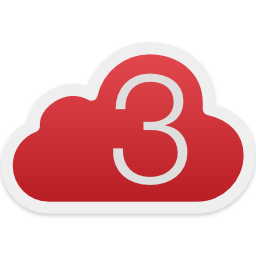
Multiverse seamlessly works with 3DelightNSI Cloud: now users are enabled to interactively — and directly from the Maya UI — render images using thousands of cores and animation using millions of cores! Be ready for a new era in rendering performance where processing is unlikely to be the limiting factor to obtain quick renders: it will be simply your internet connection.
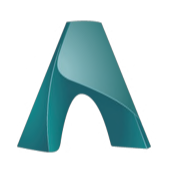
Multiverse constructs the scene and streams it to the Arnold offline path tracer in a multi-threaded and procedural fashion. This enables Maya to talk directly with Arnold minimizing time to first pixel. Assignments and overrides are hierarchical and thus inherited, as well as procedurally resolved at render-time. Full supports for velocity, acceleration, linear, curved and deformation 3D motion blur.
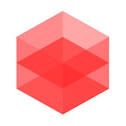
Multiverse constructs the scene and streams it to the Redshift GPU renderer in a multi-threaded and procedural fashion. This enables Maya to talk directly with Redshift minimizing time to first pixel. Assignments and overrides are hierarchical and thus inherited, as well as procedurally resolved at render-time. Full supports for velocity, acceleration, linear, curved and deformation 3D motion blur.

Multiverse constructs the scene and streams it to the Renderman offline path tracer in a multi-threaded and procedural fashion. This enables Maya to talk directly with Renderman minimizing time to first pixel. Assignments and overrides are hierarchical and thus inherited, as well as procedurally resolved at render-time. Full supports for velocity, acceleration, linear, curved and deformation 3D motion blur.

Multiverse constructs the scene and streams it to the VRay offline path tracer in a multi-threaded and procedural fashion. This enables Maya to talk directly with VRay minimizing time to first pixel. Assignments and overrides are hierarchical and thus inherited, as well as procedurally resolved at render-time. Full supports for velocity, acceleration, linear, curved and deformation 3D motion blur.

Thanks to Multiverse multi-threaded scene construction and procedural rendering architecture, generating renderer-specific formats, such as Arnold .ass, 3DelightNSI .nsi (including 3DelightNSI Cloud), Renderman .rib and VRay .vrscene, is incredibly fast and results in extremely light-weight files per frame. This allows to completely avoid rendering via Maya Batch, and instead exploit the full potential of command line rendering. Thanks to Multiverse, you can measure an average of 10X faster time-to-first-pixel, depending on how many threads your CPUs supports.

Multiverse ships with a Python API that is straightforward to use and integrate, abstracting the complexity and vastness of the USD APIs. Every operation that you can do from the GUI can be done with the Python API: this allows for easy pipeline automation for any artist because it does not require to learn the vast set of USD APIs and their inherent complexities. Read more on the development documentation.
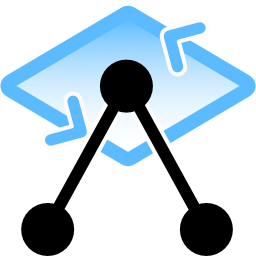
Multiverse fully support USD asset resolution: this feature is useful for users and organizations which rely on a more structured pipeline. Along with the legacy file-based approach, you can choose to have Multiverse resolve asset paths using the `ArDefaultResolver` plug-in or provide your own custom resolver. See the asset resolution documentation for more details.

With Multiverse you can "bind" USD skeleton animation to compatible USD skinned static assets in an artist-friendly manner, directly from MEOW. Skeleton animation USD data can come from 3rd party Mo-Cap applications such as Vicon Shogun, or can be generated with Multiverse, for example by loading FBX data from Mixamo in Maya and Multiverse Write as USD data. The resulting USD compositions can be exchanged with Houdini Solaris for crowd workflows, as well as output to USDZ to preview in macOS and IOS, facilitating preview work in production. The Multiverse Python API provides a skel utility module to facilitate these tasks.

Developed in partnership with the Pype.club team, the integration of Multiverse in OpenPype 3.9.2+ allows to create, publish and load Multiverse USD assets, compositions, overrides and looks in OpenPype. The integration relies on Multiverse Python API and is fully open source, thus also offering an example on how easily Multiverse can be integrated in a production pipeline with Python.

Developed by Richard Frangenberg the integration of Multiverse in Prism pipeline v2.0 beta allows to create, publish and load Multiverse USD assets, compositions and overrides in Prism. The integration is based on the Multiverse Python API.

Multiverse allows to write, read and render USDZ 3D asset files directly from Maya. It supports polygon meshes, per-face assignments, subdivisions surfaces, animated transformations together with PBR textures to define the look of objects in a realistic manner. Setup your lookdev in Maya using the "Stingray PBS" material and use Multiverse to write USDZ assets. USDZ assets can be displayed in the Multievrse HydraVP2 viewport and rendered with their embedded materials with 3DelightNSI. You will be able to obtain matching look straight in a compatible Apple device with iOS and macOS. To know more follow our documentation.